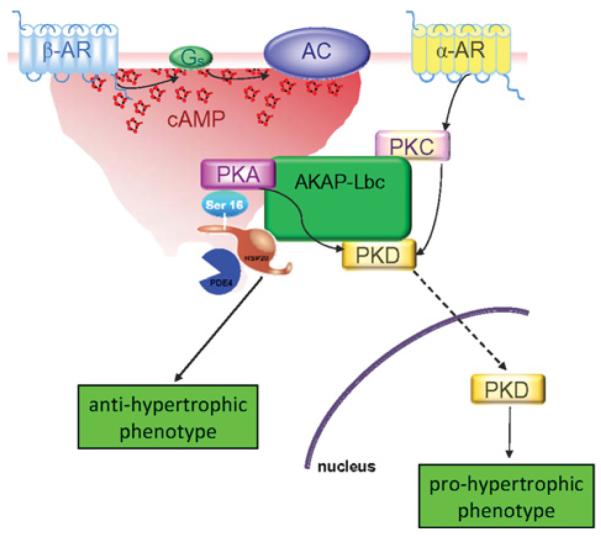Figure 2.

Proposed role of Hsp20 in protecting against β-agonist-induced hypertrophy Following β-adrenergic stimulation, a local cAMP gradient is generated via the action of PDE4 isoforms associated directly with Hsp20. With sustained production of cAMP, the local PDE4 complement becomes saturated, leading to the activation of PKA, which may be scaffolded by AKAP–Lbc. PKA then phosphorylates Hsp20 on Ser16, leading to induction of its cardioprotective actions [17]. Following α-adrenergic stimulation, PKC isoforms also scaffolded by AKAP–Lbc can phosphorylate anchored PKD. Combined PKA/PKC phosphorylation leads to the activation and translocation of PKD to the nucleus, where it contributes to the depression of transcription factors involved in the fetal gene response, a key mediator of the hypertrophic phenotype [19]. AC, adenylate cyclase; α-AR, α-adrenergic receptor; β-AR, β-adrenergic receptor.
